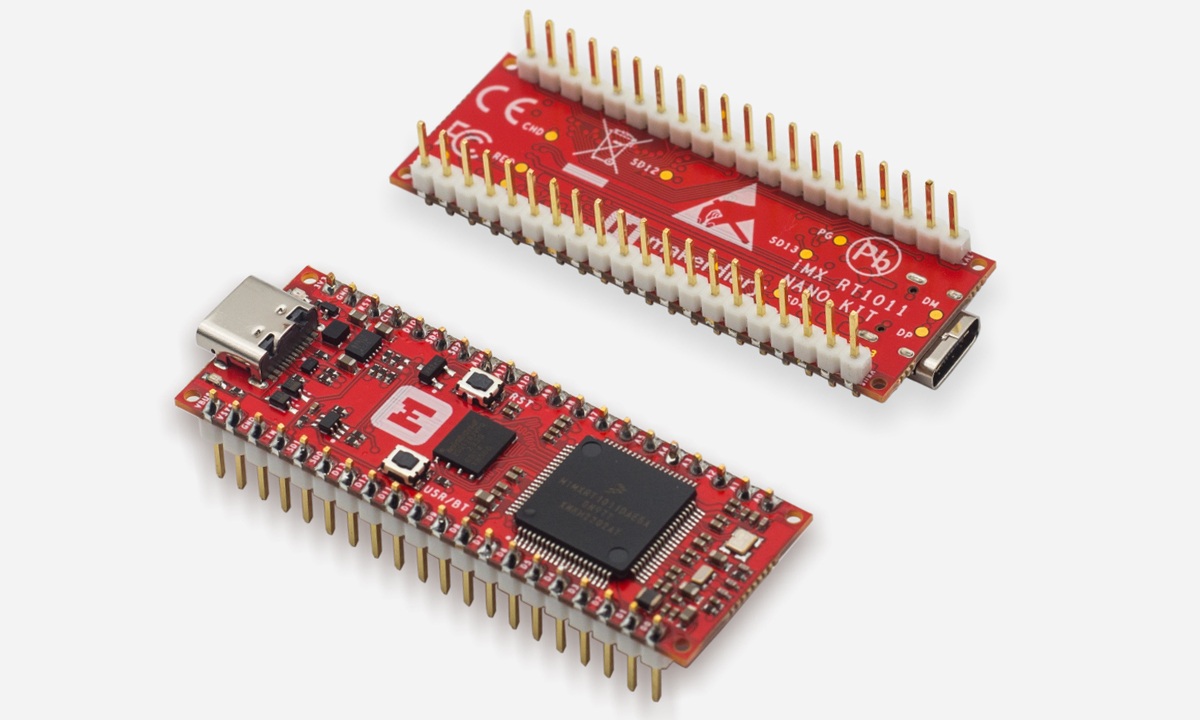Sipeed has recently released the MaixCAM-Pro AI camera devkit built around the SOPHGO SG2002 RISC-V (and Arm, and 8051) SoC which also features a 1 TOPS NPU for AI tasks. The module includes a 2.4-inch color touchscreen and supports up to a 5MP camera module. Other features include WiFi 6, BLE 5.4, optional Ethernet, built-in audio capabilities, a PMOD interface, GPIOs, and more. Additionally, it features an IMU, RTC chip, and AXP2101 power management for enhanced performance. The module is designed for AI vision, IoT, multimedia, and real-time processing applications. Just a few months back, Sipeed introduced the MaixCAM AI camera devkit, which is also built around the SOPHGO SG2002 RISC-V SoC. The new module improves on the MaixCAM with a redesigned PCB, upgraded casing, and various new features including a 2.4-inch IPS touchscreen (640×480), a 1W speaker, expanded IO interfaces, a power button, and an illumination LED. It also […]
Mercury X1 wheeled humanoid robot combines NVIDIA Jetson Xavier NX AI controller and ESP32 motor control boards
Elephant Robotics Mercury X1 is a 1.2-meter high wheeled humanoid robot with two robotic arms using an NVIDIA Jetson Xavier NX as its main controller and ESP32 microcontrollers for motor control and suitable for research, education, service, entertainment, and remote operation. The robot offers 19 degrees of freedom, can lift payloads of up to 1kg, work up to 8 hours on a charge, and travel at up to 1.2m/s or about 4.3km/h. It’s based on the company’s Mercury B1 dual-arm robot and a high-performance mobile base. Mercury X1 specifications: Main controller – NVIDIA Jetson Xavier NX CPU – 6-core NVIDIA Carmel ARM v8.2 64-bit CPU with 6MB L2 + 4MB L3 caches GPU – 384-core NVIDIA Volta GPU with 48 Tensor Cores AI accelerators – 2x NVDLA deep learning accelerators delivering up to 21 TOPS at 15 Watts System Memory – 8 GB 128-bit LPDDR4x @ 51.2GB/s Storage – 16 […]
MentorPi is a ROS2-compatible, Raspberry Pi 5-based robot car with Mecanum or Ackermann chassis
MentorPi is a ROS2-compatible robot car powered by the Raspberry Pi 5, designed for AI-driven robotics and Python programming. It offers two chassis options: MentorPi-M1, which features a Mecanum-wheel chassis, and MentorPi-A1, equipped with an Ackermann chassis. Both variants come with high-performance components such as closed-loop encoder motors, STL-19P TOF lidar, 3D depth cameras, and high-torque servos. These enable precise navigation, SLAM mapping, path planning, and dynamic obstacle avoidance, making MentorPi an ideal platform for robotics tasks. The system utilizes a dual-controller architecture to optimize performance. The Raspberry Pi 5 handles AI vision processing and strategic functions, while Hiwonder’s RRC Lite expansion board manages motion control and sensor data processing. This task distribution enhances efficiency in machine vision, AI-powered navigation, and robotic control, allowing MentorPi to tackle complex AI and vision-based applications with ease. MentorPi also supports advanced features like 3D visual mapping and YOLOv5-based object detection for recognizing road […]
DALI2 expansion module for ESP32-C6-Pico and ESP32-S3-Pico boards facilitates Smart Lighting integration
Waveshare has recently launched the Pico-DALI2 expansion module for ESP32-Pico series boards designed to enable DALI communication for customized control of multiple lighting groups. It is compatible with development boards such as the ESP32-C6-Pico and ESP32-S3-Pico and includes a DALI communication screw terminal for connecting external DALI devices. DALI (Digital Addressable Lighting Interface) is a standardized protocol used for lighting control in building automation systems. The latest version of the DALI2 protocol is better than the old one in that it offers enhanced interoperability, additional features like multi-master configurations, and better energy management capabilities. DALI2 devices can communicate bidirectionally, meaning controllers can send commands and also receive status feedback from lighting devices, allowing for more complex automation and diagnostics. We can get more information about DALI from Wikipedia. We have previously seen the uses of DALI in Texas Instruments MSPM0 Arm Cortex-M0+ microcontrollers as an interface and in Acme CM3-Home […]
Kumquat – An Allwinner V3s embedded system board with isolated CAN, Ethernet and ESP32 for WiFi and Bluetooth
The Kumquat is an Allwinner V3s board designed for industrial automation, home automation, IoT projects, robotics, and embedded system development. The Allwinner V3s features ARM Cortex-A7 cores with 64MB DDR2 RAM and 8MB SPI flash storage. Connectivity options include Ethernet, USB-C, isolated CAN-FD, and WiFi/Bluetooth via an ESP32 module. Additionally, it has eight auto-detecting 12/24V IOs, four relays for controlling external devices, and a real-time clock with battery backup. The Kumquat runs on Buildroot Linux with a mainline kernel and can be programmed with various programming languages making it a great alternative to traditional PLCs. Kumquat board specification SoC – Allwinner V3s CPU – ARM Cortex-A7 @ up to 1.2 GHz Memory – Integrated 64MB DDR2 DRAM clocked at 400MHz @ 1.5 V Video engine Storage 8MB SPI Flash for bootloader and user code I2C EEPROM for MAC addresses and user data SDIO Connector for eMMC or SD card Connectivity […]
D-Robotics RDK X3 Development Board features Sunrise X3 quad-core Arm Cortex-A53 SoC with a 5TOPS “Bernoulli” BPU
The D-Robotics RDK X3 development board is designed for edge AI applications and features a Sunrise X3 quad-core Arm Cortex-A53 processor running at 1.5GHz with a dual-core BPU (Brain Processing Unit) with 5 TOPS of edge inference capability. The board includes a 40-pin GPIO interface, ensuring compatibility with Raspberry Pi 4B accessories for versatile project development. The RDK X3 offers 2GB or 4GB of LPDDR4 RAM and includes a MicroSD card slot for storage expansion. Designed for real-time applications like robot control and intelligent monitoring, its 5 TOPS inference capability makes it ideal for computer vision workloads such as object detection, body segmentation, scene parsing, etc… Previously, we covered the Horizon X3 AI development board, which uses the same Horizon Robotics Sunrise X3 processor. We’ve also written about several other edge AI development boards, including the Synaptics Astra Platform SL1680, SagireEdge AI 600, and MYiR Tech’s MYC-LR3568. Feel free to […]
$15 Makerdiary iMX RT1011 Nano Kit runs Zephyr RTOS on 500 MHz NXP iMX RT1011 crossover MCU
Makerdiary’s iMX RT1011 Nano Kit is a prototyping board featuring the NXP iMX RT1011 Cortex-M7 Crossover MCU running Zephyr RTOS. It offers 128 KB of on-chip RAM, configurable as TCM or general-purpose memory, and supports high-speed USB, UART, SPI, I2C, SAI, PWM, GPIO, and ADC, making it suitable for a variety of embedded applications. The board also includes a 128 Mbit external QSPI flash with XIP support, flexible power management, a programmable LED and Button, and a USB-C connector. It features a dual-row 40-pin layout (DIP/SMT) with up to 33 multi-function GPIO pins, 15 of which can be used as ADC inputs, along with a Serial Wire Debug (SWD) port. Optional pre-soldered headers are available for added flexibility. We previously covered other iMX RT1011-based development boards, such as the Olimex RT1010-Py running MicroPython and Adafruit Metro M7 with CircuitPython firmware. Be sure to check them out if you’re interested. Makerdiary’s […]
Google Pigweed SDK now supports Raspberry Pi RP2350 microcontroller
Google Pigweed, a collection of open-source libraries for embedded software development, now supports the Raspberry Pi RP2350 MCU and comes as a software development kit (Google Pigweed SDK). These libraries, also called modules, are building blocks that make embedded software development faster and more reliable. It targets tiny 32-bit microcontrollers such as STMicro STM32L452, Nordic Semi nRF52832, and the Raspberry Pi Pico line of microcontrollers. The library components have shipped in Google Pixels, Nest thermostats, robots, satellites, and drones. On August 8, the Pigweed project was released as a software development kit (SDK) in developer preview with official support for Raspberry Pi RP2350 and the associated Pico 2 development board. The new release uses the Bazel build system – a feature upstreamed into the Pico SDK by the Google Pigweed team – and a complete, open-source Clang/LLVM toolchain. The Google Pigweed SDK includes sample code, modules, and a comprehensive tutorial […]










